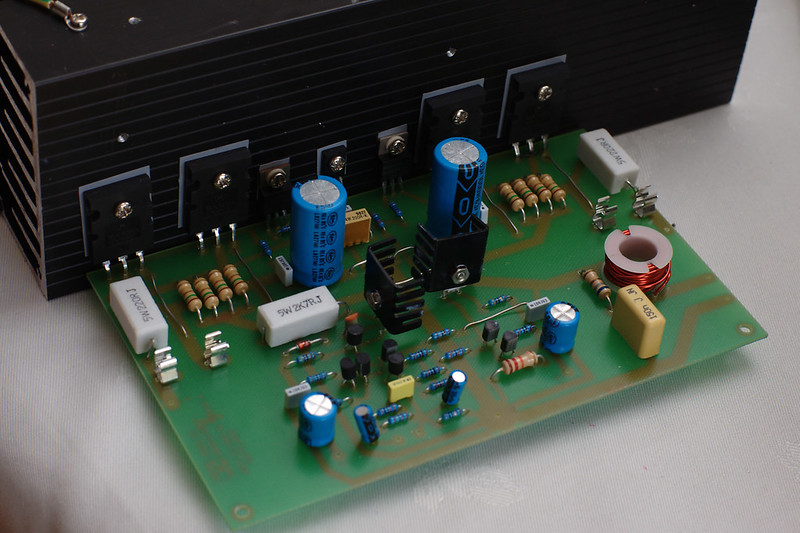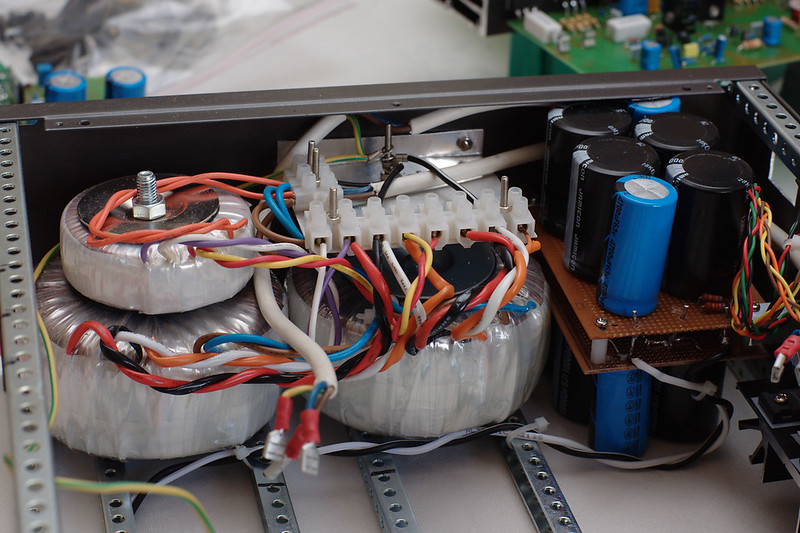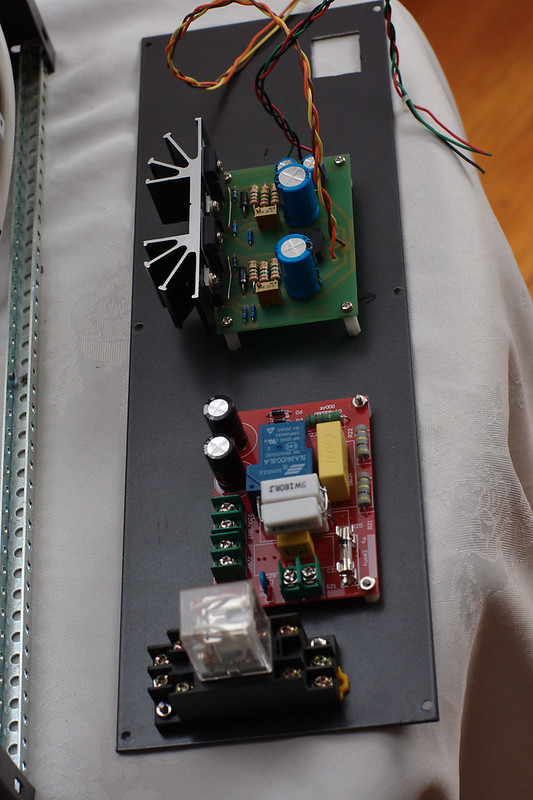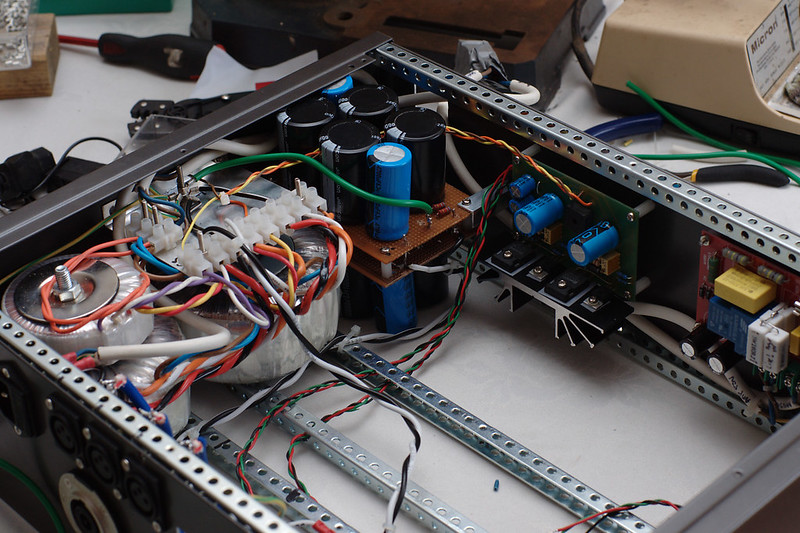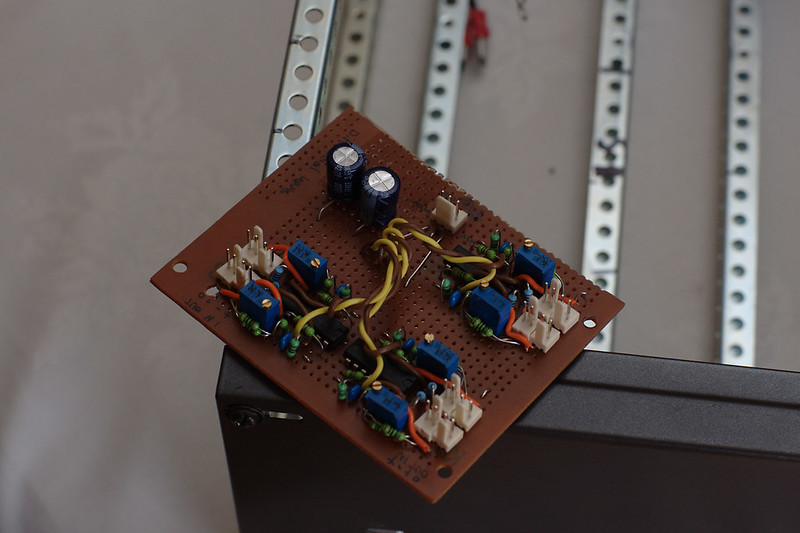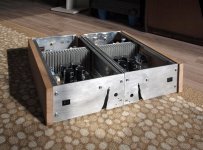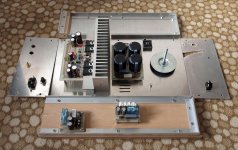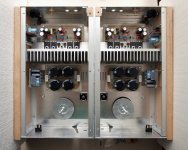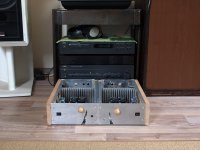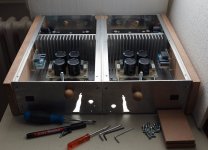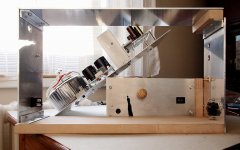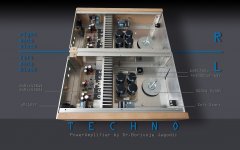Great!!! Love the idea!😎😎😎"Colorsound Fuzz"
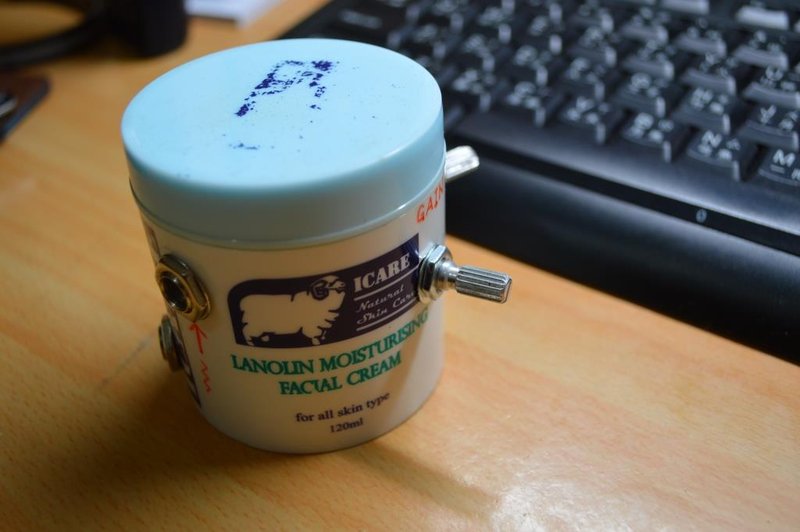
(PS. I saw many DIYer with unlimited budget)
The lack of a knob prevents me from giving it a perfect 10. 😀
Now with knobs:
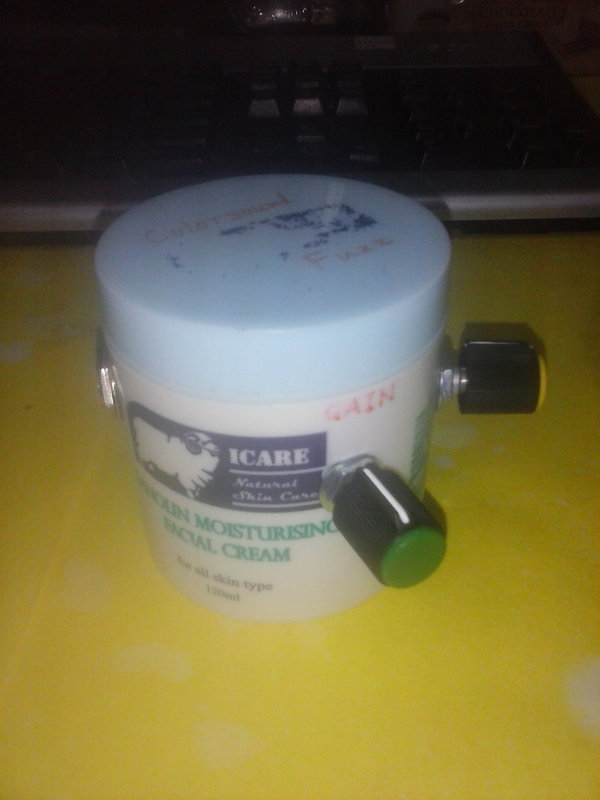
LM1875T (25W) x2 (using PT-40 to power), BTL mode (60W) is able by grounding the R-channel and sounds very nice for Bass guitar playing.
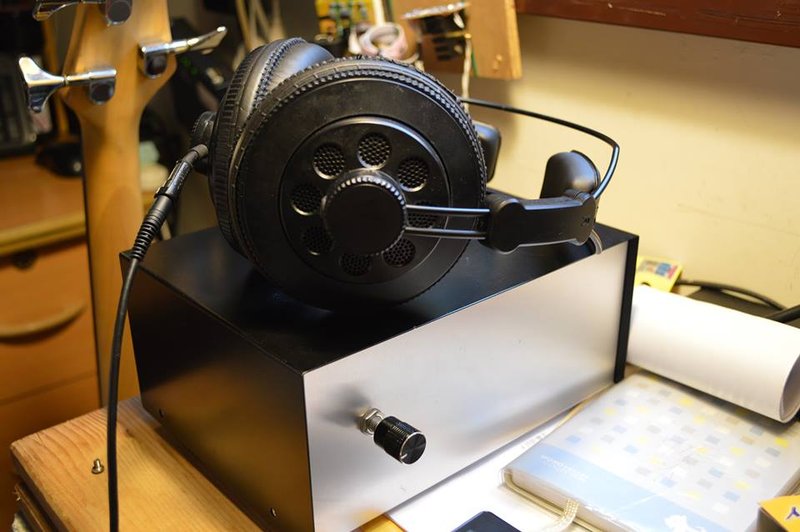

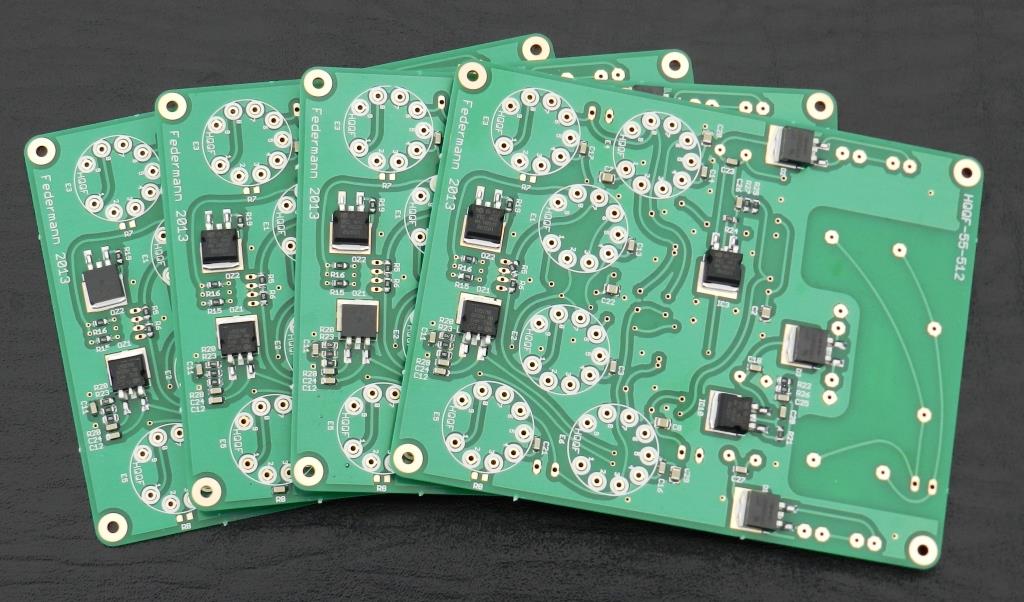
Preamplifier
Is there a specific pcb program that is used for making this very nice board?
I have here done a pcb for a class B speaker measurement amplifier who get to be tested.
Attachments
one of my amps
😀
PHP:
Attachments
Last edited:
What is the power device e.g. 2N3055? or FET?
MJE15024/25 ,THE OTHER IS 2SK135/J50😀😀
Attachments
Last edited:
Whose brds? Inerested in the bipolars (transistors MJEs...)MJE15024/25 ,THE OTHER IS 2SK135/J50😀😀
I HAVE ALSO DIYED THIS AMP TWO YEARS AGO ,IT IS CALLED SC-480
😀
😀
Figured I should introduce myself in a build thread 😉
I'm new to the diyaudio forum but this is my 4th amplifier build, I started building DIY amps+speakers about 20 years ago in high school and did a degree in EEE. What I'm about to post here is my current build but the technology will seem a little old because I bought all the parts in about 2003 while I was doing a (non-EEE) PhD. I decided that finishing the PhD was more important than louder music so I put it all in a cupboard where it stayed while I got married, had kids, etc: life happened. I recently decided to just do the damn build already.
What it is is a 6.1 home theatre system that will get used for music more often than movies. 7-channel HT was invented AFTER I designed all this, so once the 6 channels are all built, I'll think about the 7th.
Each of the 6 channels is 3-way actively crossed over, with 100+50+50W RMS per channel. Stereo pairs (2x100+4x50) live in 3U rack cases, and I'm nearly done assembling the first.
The 100W channels are Si Chip "Ultra Low Distortion" BJT amps, a design that has been updated twice since I bought these kits. Here's one channel hanging off the 80mm fan-tunnel heatsink:
(the safety resistors are still in, I plan to bias them tomorrow)
Here's the ironmongery, a 35+35 300VA and 12+12 20VA to run the two 100W channels, plus a 25+25 300VA to run the four 50W channels:
The two windings of the 12+12 are put on the outermost edges of the 35+35 to give 47+47 which is linear-regulated down to 55+55 DC for the IPS+VAS. Don't worry, I won't forget the nut on the ground star 😉 Filter caps are 4x10,000+2x4700uF per rail, so a total of about 0.1F/70V for both rails of both channels.
Here's an overview of the power control stuff, bolted to the inside of the front false panel:
Top to bottom, you can see the linear regulator board for the 2x100W, the soft-start board and a power relay for switching the mains (remote control signal from HT receiver and thermal cutout via microcontroller). The soft start is a cheap chinese kit that I replaced its crappy little resistor with 4x180R 5W wirewounds as you can see.
Here's an overview of the case with all the PSU stuff installed and tested:
You can see on the back panel that it has 6*XLR inputs and 2*Neutrik 8-pole outputs (no accidental band confusion between amp and speaker!). The XLRs are because I'm using DCX2496s as crossovers; I actually built a whole pile of op-amp LR4 crossover boards but it was such a HUGE chore wiring them up, with no flexibility or ability to time-align through digital delays etc, that I've given up on that route. I may be selling a few TL074 LR4 PCBs later if people want them...
And because it's balanced, here are the 6 differential inputs:
They're the variable-gain arrangement of Figure 11 in Doug Self's page about balanced IO, built using half a TL074 per channel. Powered from 15+15V. It mounts on top of the heatsink tunnel, right under the top of the case.
Not pictured here are the four LM3886 chip amps that do the mid+high channels. Not very interesting, but they'll appear in a photo later once I get everything in the rack case. It is absolutely chock full.
Total build time on this box so far: about 3 weeks elapsed, doing an hour or two of work most nights. With any luck, I will hear it tomorrow, though the thermal controller isn't done yet - waiting on Arduino Nanos and super-quiet PWM fans to arrive in the post. Most of the code for that is written though.
The loads attached to this are Vifa speakers in home made cabinets, infinite baffle (39Hz F3 Q=0.6 IIRC), nothing fancy. M26WO-06-08, M10MD-39-08, D27TG-35-06. There are Shivas for subs too (non-DIY amp; Behringer EP2500), but not assembled yet because we haven't had the "yes there will be more furniture and where will you put it" discussion yet 😉
Last edited:
"Wireless" 🙂 TECHNO power amplifier by Dr.Borivoje Jagodic. Mono blocks still unfinished, but I want to share photos of my first DIY amplifier...
I don't see any wiring, so have you powered up those modules yet?
Because I don't see any mica or other kind of isolators on any transistors on the heatsink. And no thermal grease.
They may not be visible on the photos. But if they're not there and you have not yet powered up those modules, you might want to rethink this and double check for proper isolation, or your first diy amp might just blow up in your face. (unless you use the light bulb trick)
Tannoy 2528 in closed box 140 l.What kind of speakers will this drive?
Tannoy 2528 in closed box 140 l.
Well, at least there is some volume behind it for somewhat low end better response. But those are coaxial full range aren't they? I wouldn't expect the efficiency much over 90db. It doesn't seem like this would provide much volume and for dynamic range, the amp would be pegged right away.
I don't see any wiring, so have you powered up those modules yet?
Because I don't see any mica or other kind of isolators on any transistors on the heatsink. And no thermal grease.
...
This is unfinished amplifier, so I made joke "Wireless" = still without wires... And still without thermal grease... 🙂
Attachments
Well, at least there is some volume behind it for somewhat low end better response. But those are coaxial full range aren't they? I wouldn't expect the efficiency much over 90db. It doesn't seem like this would provide much volume and for dynamic range, the amp would be pegged right away.
You tell it on the basis of experience and check or empirically? Hiraga perfectly controls 10" loudspeakers - I claim on the basis of experience of use)))
You tell it on the basis of experience and check or empirically? Hiraga perfectly controls 10" loudspeakers - I claim on the basis of experience of use)))
Control isn't the issue. What I was referring to is the sound volume that can be achieved with low efficiency speakers and such a low amount of power.
If you had speakers with an efficiency like 100db or more, then 8W is plenty, although it's good to have headroom to never clip on large transients, especially if the recording has a high dynamic range.
On low efficiency hifi speakers, commonly 90db or lower, then more watts are needed to obtain a good level of volume. So you must be listening at low level, always, or you'll clip right away and not get much higher sound volume. With classical music, you get by listening at low levels, but anything with a bit of a beat to it will require more.
- Home
- Amplifiers
- Solid State
- Post your Solid State pics here










